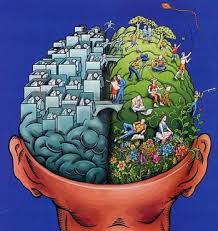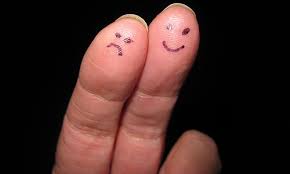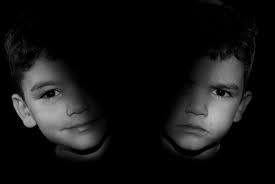Rehab Articles

If someone you love struggles with bipolar disorder there are some tips that can make your life and your living situation more productive and easier. 5 great tips that you can use include:
-
Know what bipolar disorder is. Do the necessary research so that you understand what is going on with your loved one and how you can help them. Understanding what your loved one is experiencing will help you and them both.
-
One of the most helpful tips you can learn is to keep notes and pay attention to the symptoms that your loved one is experiencing and displaying. This symptom journal can be very beneficial for medical and mental health professionals, as well as helping you learn what you can expect and how to best manage these symptoms.
-
Communicate openly with your loved on. Ask them what you can do to help them. Don’t be judgmental or make assumptions. Discuss any concerns with the family physician or mental health treatment provider.
-
Don’t let mania catch you off guard. When someone is depressed there are many symptoms common to most individuals, but mania may be displayed differently be each individual who has bipolar disorder. This mental disorder includes lows that can be very low, and highs that have no ceiling. Needing little sleep, having plenty of energy, and being overly optimistic or failing to see that they are on the upswing of bipolar disorder is often noticed by family members. Some may talk excessively, chattering on and on, while others just seem to be in a good mood.
Rehab Articles

Schizophrenia, bipolar disorder, and creativity often go hand in hand, and a new study has found that there is a genetic link between all of these elements. Some of the most famous artists through history have struggled with mental illness in some form. It is believed that Vincent Van Gogh was schizophrenic, and the voices are the reason that he cut off his own ear. Famed musician Kurt Cobain, who committed suicide, was diagnosed as having bipolar disorder. Robert Power, the first author of the study who is associated with the Psychiatry, Psychology and Neuroscience at King’s College, London in the UK, explained “For most psychiatric disorders little is known about the underlying biological pathways that lead to illness. An idea that has gained credibility is that these disorders reflect extremes of the normal spectrum of human behavior, rather than a distinct psychiatric illness. By knowing which healthy behaviors, such as creativity, share their biology with psychiatric illnesses we gain a better understanding of the thought processes that lead a person to become ill and how the brain might be going wrong.”
According to the latest study on schizophrenia, bipolar disorder, and creativity those people who are creative are 25% more likely to have a gene variant for bipolar disorder or schizophrenia. Professional writers, dancers, singers, painters, and others whose job requires creativity were more likely to contain one of the gene variants for these mental disorders than people who engaged in manual labor or other professions that did not involve creativity. The study was published in the Nature Neuroscience journal.
Rehab Articles

An accurate diagnosis can be difficult when it comes to bipolar disorder, and there are a few subtypes within this disorder as well. The 3 main subtypes of this condition and the main characteristics of each subtype include:
-
Bipolar I Disorder- This is also referred to as a mixed episode or simply mania. Usually individuals who have this sub category of bipolar disorder will experience the lows of depression along with the highs of mania. This category can include symptoms which can become very severe at times, and the condition can be devastating and take years for proper management and recovery.
-
Bipolar II Disorder- This sub category may also be called hypomania and depression. These individuals do not experience manic episodes which are full blown and out of control, although they may exhibit some signs of the manic phase of the mental disorder. Severe depression is one of the most dangerous symptoms when an individual has this type of bipolar disorder and there is an accurate diagnosis.
-
Cyclothymia- This sub category involves mild depression and hypomania, so the symptoms of both phases are not as severe or life changing. The mood swings and emotional changes experienced by these individuals are usually cyclical in nature.
Someone who has been diagnosed with bipolar disorder, regardless of the sub category used in the accurate diagnosis, can experience difficulty in every area of life. School, work, home, and relationships can all be damaged as a result of the mental disorder. With the proper treatment this condition can be managed and the individual can lead a full and productive life once more.
Rehab Articles

Everyone has mood swings, and some may experience these with greater frequency or severity than others, but when do these ups and downs qualify as bipolar disorder? The difference between the usual highs and lows of life and this mental disorder is the severity and the frequency of the changes. Someone who has bipolar disorder will go from deeply depressed to being euphoric and full of energy, and treatment usually consists of mood stabilizer drugs in order to minimize the swing of the emotional pendulum. In order to be diagnosed with a mental disorder the episodes of unusual thoughts and behaviors usually must last days at least. Everyone is going to be somewhat depressed when certain negative events occur, and we would all be full of energy and excitement if we won a large amount of money in the lottery.
If you or someone you know suffers from severe mood swings and you are concerned that the problem may be bipolar disorder then there are a few things you can do. Start keeping a journal of your feelings, emotions, and activities. Record when you start to get low or when you seem to be full of energy and have an inflated sense of self esteem. This will help any mental health professionals that you consult for treatment come up with an accurate diagnosis of the conditions involved. If depression or the other extreme seem to create problems in your life then mental health treatment should be sought. Whether it is just severe mood swings or bipolar depression there is help available if you are just willing to reach out and ask for it.
Rehab Articles

bipolar disorder, risk taking
A new medical study by researchers at Manchester University, UK, probes the actual neuroscience behind the risk taking that is common in individuals with bipolar disorder. This is a form of mental illness that causes the individual to switch between feeling mania and depression, and are considered rapid cyclers who can experience numerous fluctuations on a daily basis. When the individual is experiencing a manic episode then they are far more likely to engage in risk taking and give in to compulsive behavior. This not only affects the individual but also their family and friends. The medical study involved 40 participants, 20 who were diagnosed with bipolar disorder but who were not currently taking any medications for mental illness and 20 who were not suffering from bipolar disorder at all.
According to the lead researcher on the study involving bipolar disorder and risk taking, Professor Wael El-Deredy “The greater buzz that people with bipolar disorder get from reward is a double-edged sword. On the one hand, it helps people strive toward their goals and ambitions, which may contribute to the success enjoyed by many people with this diagnosis. However, it comes at a cost: these same people may be swayed more by immediate rewards when making decisions and less by the long-term consequences of these actions.” The actual study results can be found in the journal Brain. The study may help make treatment for bipolar disorder more effective in the future, so that the risk taking component can be better controlled.



